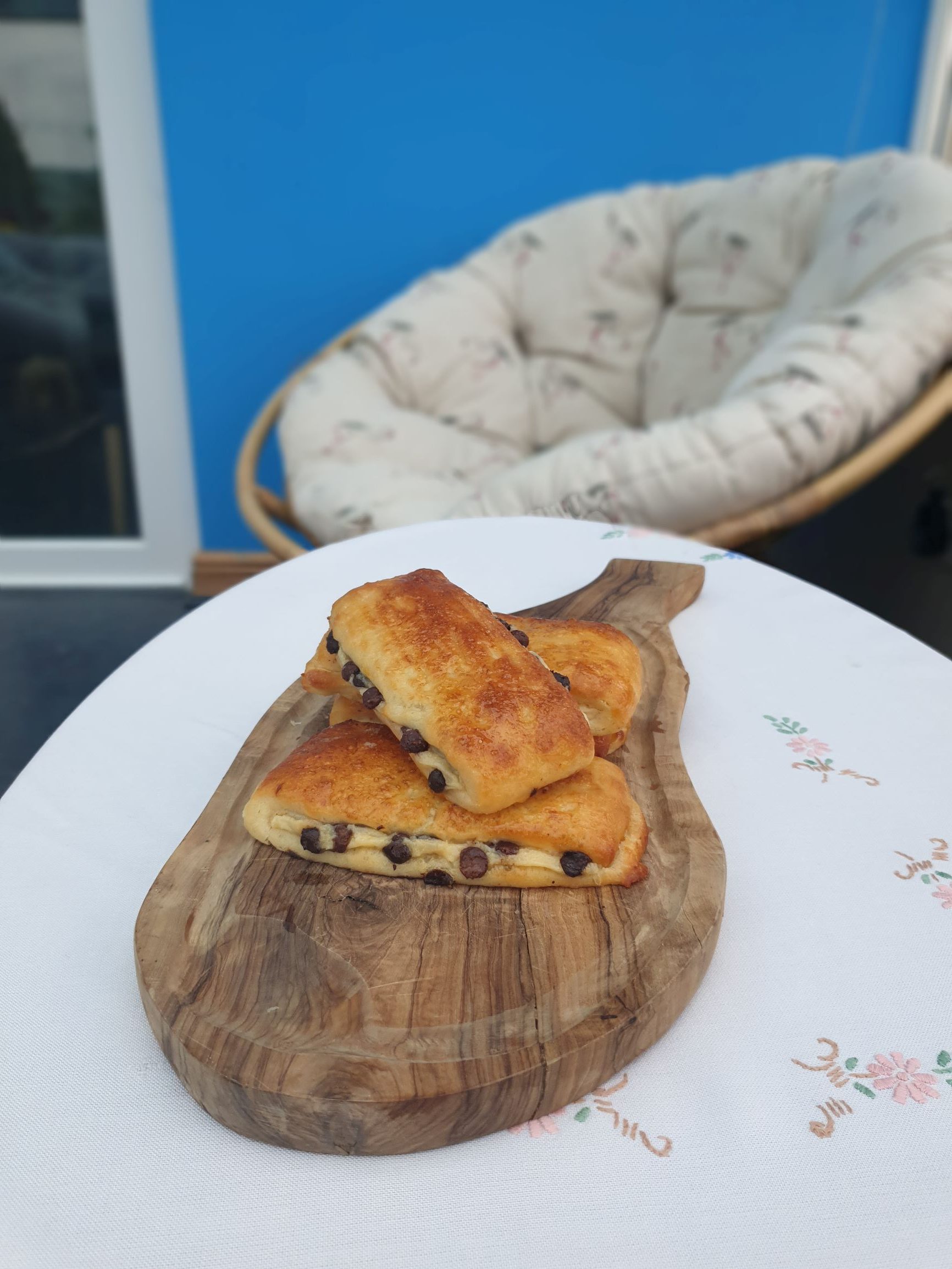Brioche is what is known as an enriched dough, due to the addition of eggs and sugar to the dough mixture. It has an irresistible light, rich, buttery taste. Swiss brioche is brioche dough filled with vanilla crème patissière and chocolate chips, and cut into individual portions, resulting in the perfect snack. They are a type of viennoiserie.
The first step is to make the brioche dough using flour, sugar, salt and fresh yeast. The eggs are then incorporated, followed by the butter. It is left to prove for an hour and then flattened into a rectangle and placed in the fridge. Meanwhile you make the crème patissière until the dough has hardened a little. However, it is such a soft dough that it needs to be rolled out returned to the fridge again before making into Swiss brioches. Once it is ready, the bottom half of the rectangle is covered with crème patissière and chocolate chips are evenly sprinkled over the top. The top half is then sandwiched over and the dough cut into equal rectangular portions. They are left to rise again for a further two and a half hours before glazing baking. Finally, they are topped off with a sugar syrup to give them their signature glossy sheen. All in all it took most of the day to make these, but rest assured they were done in time for my mid-afternoon snack.
This recipe uses fresh yeast so I did some research on it beforehand. Although the recipe happily incorporates it with the flour, salt and sugar at the beginning, I read that it is advisable to add it to some sugar and lukewarm liquid before using. The yeast will dissolve and should foam after 5-10 minutes if it is properly activated. If not, it won’t work and you should find some more.
Translation
As I’m becoming more and more familiar with baking terminology there were fewer noteworthy terms and phrases to pick up on.
The fresh yeast had to be “émiettée”, i.e. crumbled before use.
The stand mixer required the “crochet pétrisseur” attachment, literally the kneading hook, which is refers to the dough hook attachment.

Glazing
The recipe uses eggs “pour la dorure”, i.e. to glaze before baking. This comes from doré, golden, to make golden. Here it refers to the egg wash or glaze. Glazes come in different guises and I found a helpful article explaining the different types of available and the effect they have on the finished bake. Since my recipe uses one whole egg and one egg yolk to glaze, the result is a beautifully golden sheen.
Overall the brioches were a real delight to enjoy. The process is quite long-winded, but if you’re working from home it’s a great motivation for taking breaks. And come mid-afternoon, your goûter, or snack will be freshly-made.



